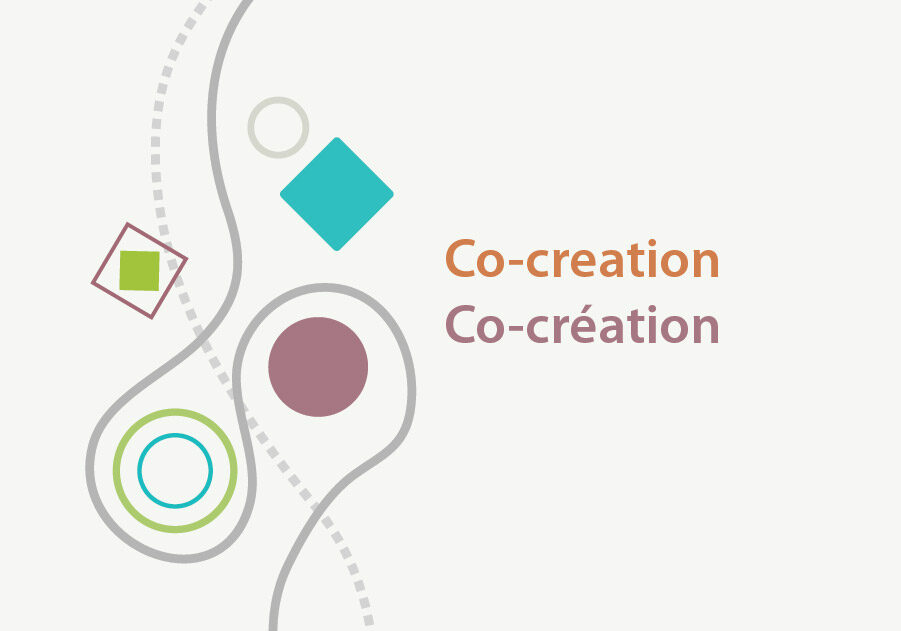What is co-creation?
Co-creation is a process where multiple stakeholders with different perspectives come together to “create”. The objective of the creation – whether it is a piece of art, a product, a service, a solution – informs the specifics of the co-creation process.
By employing a co-creation process that is built into our stakeholder engagement activities, we aim to design knowledge seeking consultations, programs, workshops, and focus groups with clear co-creation objectives in mind.
What are the solutions we are co-creating?
The flip side of the question is, what challenge are we addressing?
Broadly speaking, DigitalASO is one of ArtsPond’s responses to the overarching challenge of digital justice within the arts and culture sector. Within this framing, there are lots of different challenges to explore, and the priority areas are in DigitalASO’s mandate. However, regardless of the specific challenges that we may be faced with, the solution(s) we choose to invest in must be focused on breaking down silos, fostering connections, and building a sustainable foundation for a resilient arts and culture sector in a digital society and economy.
How do we know we have come up with good (enough) solutions?
We evaluate our solutions using the three-prong “human-centered design” framework:
- Human desirability (what needs does our solution respond to?)
- Tech feasibility (what is the form and substance of the solution?)
- Business viability (what is the business model to sustain the solution?)
At each step of our co-creation process (of solution(s)), we strive to get closer to articulating what that solution is by having better answers these questions. We return to them iteratively, and increasingly frequently, as we get close to a good (enough) solution.
This iterative and emergent process of learning, creating, (in)validating is the essence of “design thinking”. When applied effectively, we can be comfortable with not knowing the outcome from the get go, while also able to narrow it down to a concrete outcome by the end of the process.
What does DigitalASO’s co-creation process look like?
Given that DigitalASO is focused on co-creating solutions, we have developed a simple and adaptable co-creation process that is rooted in an iterative cycle of learning, creating, and validating.
“Learning” often begins with engaging stakeholders and users by asking open-ended questions (which are thoughtfully crafted), facilitating generative conversations (by bringing unlikely groups together), and analyzing the knowledge gathered through visual techniques as appropriate (concept mapping, business canvas, dialogue mapping, etc.). “Learning” can also happen in more specific activities, such as usability testing, business modelling, which may be more appropriate at later phases.
“Creating” will involve prototyping and technology in future phases, but at this early phase, what we create are the initial findings from our “learning” activities. Once articulated, we “(in)validate” them with different audiences by sharing back with internal stakeholders, through further opportunities to have open-ended discussions (the purpose and scope of which begins to narrow), or by publishing insights in specific formats designed for easy feedback through various communication channels.
With careful planning and thoughtful design of the “whom”, the “why” and the “how” of the engagement, going through just two or three iterations of this cycle can lead to innovative and creative results.
